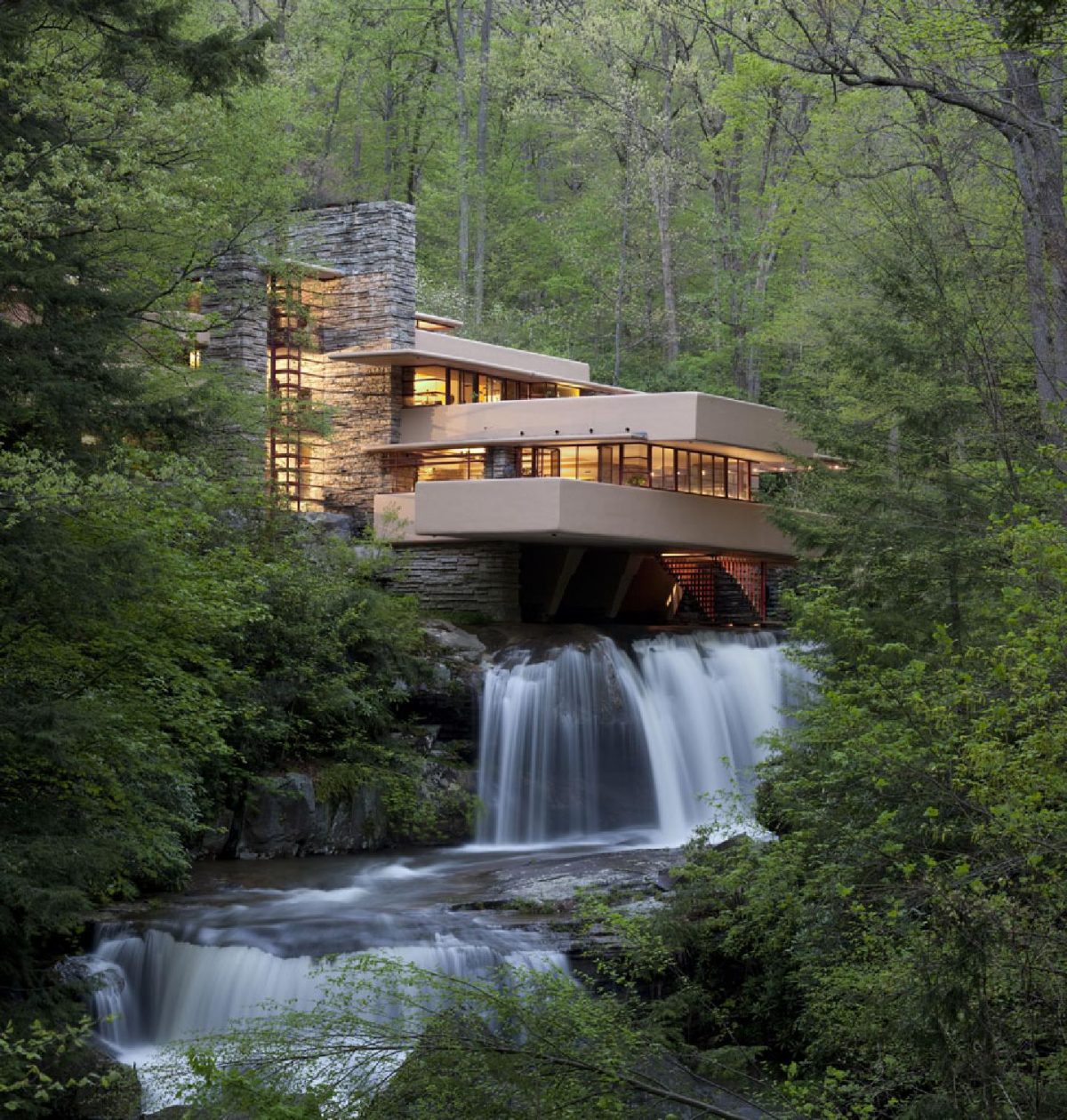Frank Lloyd Wright (Father of Architecture) was an American architect, designer, writer, and educator. Over a period of seventy years, he designed over one thousand structures. His “Prairie Style” became the basis of twentieth-century residential design in the United States. He was born on June 8, 1867, in Richland Center, Wisconsin, and died on April 9, 1959, while living in Phoenix, Arizona. Ironically this is the same year owner of Scarano Architect, PLLC, and Architect, Robert M. Scarano Jr., was born, (September 23, 1959). As one great architect left this earth another one came into the world.
Wright believed in designing in harmony with humanity and the environment, a philosophy he called “organic architecture.” If you ask the average citizen to name a famous architect, Frank Lloyd Wright would be their first answer. Abundantly creative, Wright changed the way we build and live. He actually designed 1,114 architectural works of all types of which 532 were realized. Wright created some of the most innovative spaces in the United States. His visionary work cemented his place as the American Institute of Architects’ “greatest American architect of all time.” Wright believed that architecture could be genuinely transformative and he devoted his life to creating an aesthetic that would enhance society’s well-being. . “Above all integrity,” he said: “buildings like people must first be sincere, must be true.” To Wright, architecture was not just about buildings, but about nourishing the lives of those within them.
Frank Lloyd Wright was a truly organic builder who would develop a structure from within working outwards. In this way, he was able to stay in harmony with the time, place, and inhabitants of it. Wright felt that in organic architecture it was impossible to consider the building as one thing, the furnishing as another, and its setting and environment as yet another. His strongly held belief was that these elements must be conceived together to work as one thing. In order to accomplish this Wright-designed furniture, rugs, fabric, art glass, lighting, dinnerware, and graphic arts.
Frank Lloyd Wright devoted his life to promoting architecture as “the great mother art.” He drew inspiration from the Japanese idea of a culture in which every object, every human, and every action were integrated to make the entire civilization a work of art. Ultimately his vision served beauty. He firmly believed that every man, woman, and child had the right to live a beautiful life in beautiful surroundings. Throughout his career, he sought to create affordable architecture for all that served that inspiration.
Many of Frank Lloyd Wright’s designs are legendary. Here are just a few:
- Fallingwater, located in Mill Run, PA (1939).
- Kentuck Knob, located in Dunbar, PA (1956).
- Graycliff, located in Derby, NY (1926).
- Darwin D. Martin House, located in Buffalo, NY (1905).
- Solomon R. Guggenheim Museum, located in NYC, NY (1959).
- The Crimson Beech, located in Staten Island, NY (1959).
- Congregation Beth Sholom, located in Elkins Park, PA (1954).
- Pope-Leighey House, located in Alexandria, VA (1941).
Wright aspired to provide his clients with environments that were not only functional but also “eloquent and humane.” He pursued architecture for everyman rather than every man for “one architecture.” Wright lives on through the beautiful buildings he designed as well as through the powerful and enduring idea that guided his work- that buildings should serve to honor and enhance the natural beauty surrounding them. His famous quote exemplifies this: “I would like to have free architecture. Architecture that belongs where you see it standing, and is a grace to the landscape instead of a disgrace.”
Wright embraced new technologies and he was constantly pushing the boundaries of his field. His fascination for the new and his desire to be a pioneer help explain Wright’s tendency to test his materials, sometimes even to the brink of failure, in an effort to achieve effects he could claim as uniquely his own. His own texts are a testament to the fact that his ability to articulate himself matched his genus with brick, concrete, and glass. His books offer readers a glimpse into the life and work of the complex architect he was.
Frank Lloyd Wright passed away on April 9, 1959, at the age of 91, only six months before the Guggenheim Museum opened its doors. Its unique design helped to define Wright as the greatest architect of the twentieth century and most probably the greatest American architect of all time. His timeless style of architecture emphasized simplicity and natural beauty which was in contrast to the elaborate and ornate architecture that prevailed in Europe. Wright had endless energy and great persistence. Of his more than 1,100 building designs, nearly one-third came during his last decade of life. We continue to pay tribute to this great man and know that his genius will live on for all eternity through his immortalized designs.



Leave a Comment